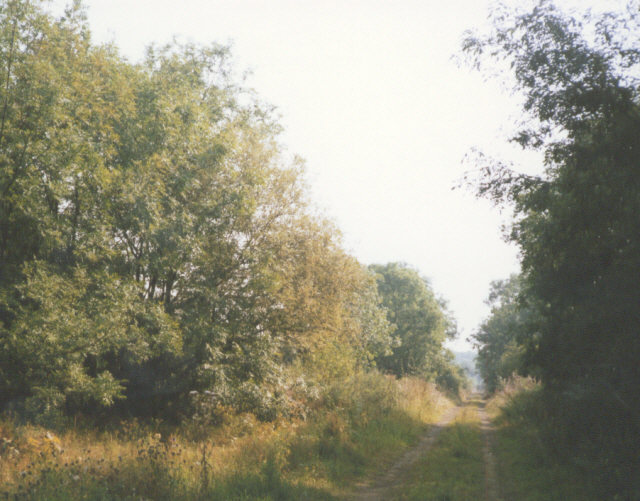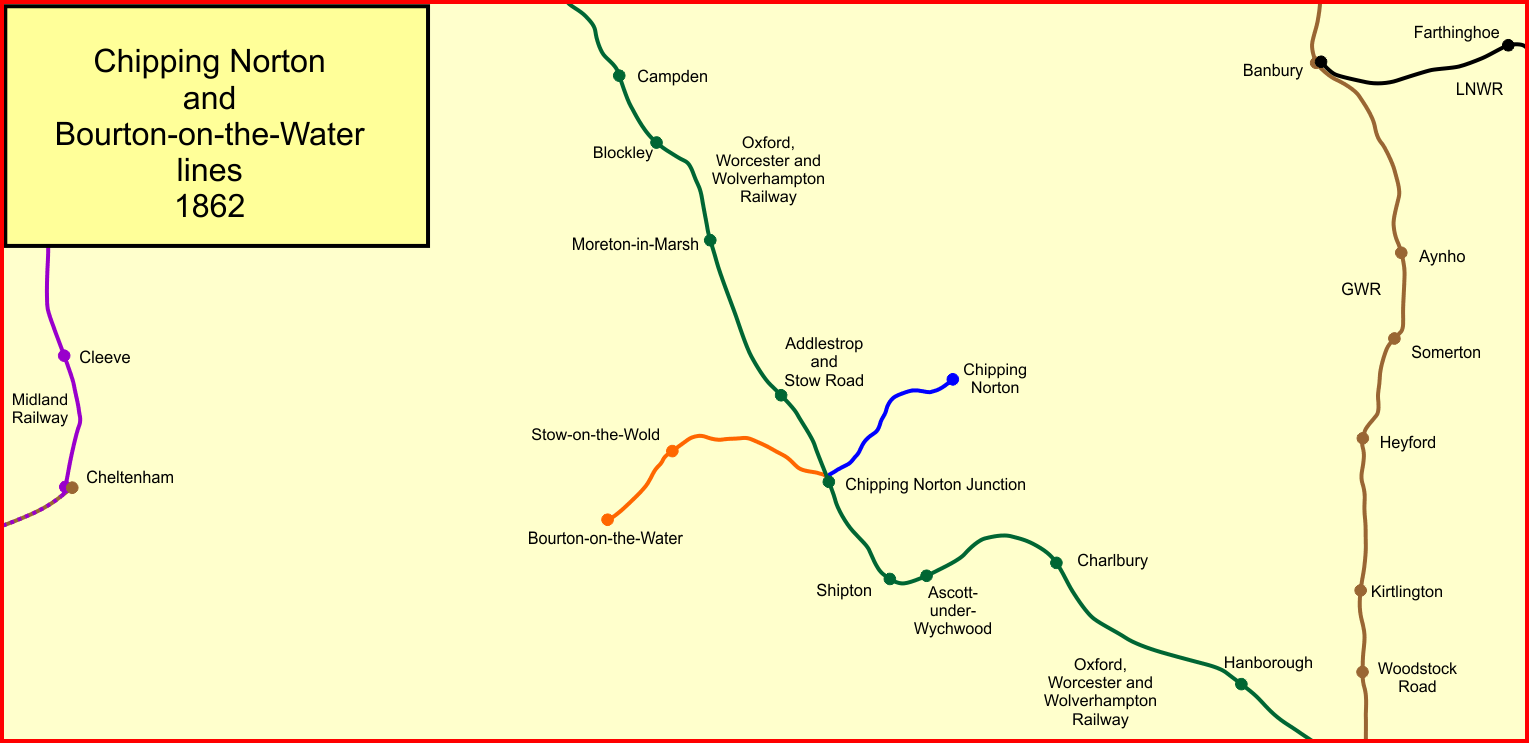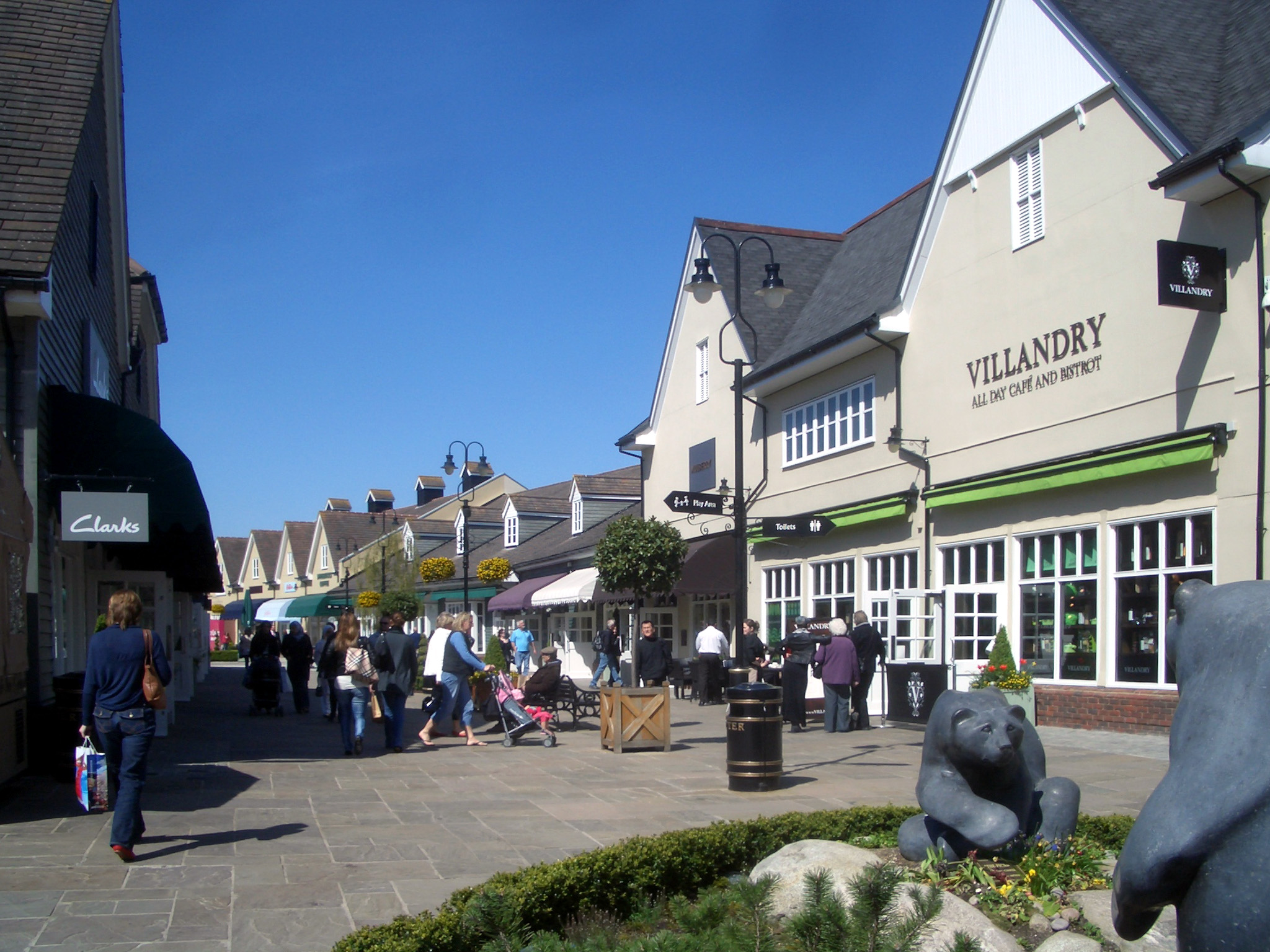|
Milton, Cherwell
Milton is a village and civil parish about south of Banbury in Oxfordshire, on the Milton road between the villages of Adderbury and Bloxham. *The Church of England parish church of Saint John the Evangelist was built in 1856 by the Gothic Revival architect William Butterfield. *Milton has one public house, The Marlstone Tavern, aka the pie pub, https://piepub.co.uk/ The public house has a carpark, garden and is a Freehouse. *The former Banbury and Cheltenham Direct Railway, part of the Great Western Railway, was completed in 1881. The GWR opened a small railway station, Milton Halt, in 1908 on the northern edge of the village near Manor Farm. British Railways closed the halt in 1951 and closed the railway to freight traffic in 1964. The track was removed in 1965. *The village is built near an affluent of the River Cherwell The River Cherwell ( or ) is a tributary of the River Thames in central England. It rises near Hellidon, Northamptonshire and flows southwards fo ... [...More Info...] [...Related Items...] OR: [Wikipedia] [Google] [Baidu] |
United Kingdom Census 2011
A Census in the United Kingdom, census of the population of the United Kingdom is taken every ten years. The 2011 census was held in all countries of the UK on 27 March 2011. It was the first UK census which could be completed online via the Internet. The Office for National Statistics (ONS) is responsible for the census in England and Wales, the General Register Office for Scotland (GROS) is responsible for the census in Scotland, and the Northern Ireland Statistics and Research Agency (NISRA) is responsible for the census in Northern Ireland. The Office for National Statistics is the executive office of the UK Statistics Authority, a non-ministerial department formed in 2008 and which reports directly to Parliament. ONS is the UK Government's single largest statistical producer of independent statistics on the UK's economy and society, used to assist the planning and allocation of resources, policy-making and decision-making. ONS designs, manages and runs the census in England an ... [...More Info...] [...Related Items...] OR: [Wikipedia] [Google] [Baidu] |
Pevsner Architectural Guides
The Pevsner Architectural Guides are a series of guide books to the architecture of Great Britain and Ireland. Begun in the 1940s by the art historian Sir Nikolaus Pevsner, the 46 volumes of the original Buildings of England series were published between 1951 and 1974. The series was then extended to Scotland, Wales and Ireland in the late 1970s. Most of the English volumes have had subsequent revised and expanded editions, chiefly by other authors. The final Scottish volume, ''Lanarkshire and Renfrewshire'', was published in autumn 2016. This completed the series' coverage of Great Britain, in the 65th anniversary year of its inception. The Irish series remains incomplete. Origin and research methods After moving to the United Kingdom from his native Germany as a refugee in the 1930s, Nikolaus Pevsner found that the study of architectural history had little status in academic circles, and that the amount of information available, especially to travellers wanting to inform themselv ... [...More Info...] [...Related Items...] OR: [Wikipedia] [Google] [Baidu] |
River Cherwell
The River Cherwell ( or ) is a tributary of the River Thames in central England. It rises near Hellidon, Northamptonshire and flows southwards for to meet the Thames at Oxford in Oxfordshire. The river gives its name to the Cherwell local government district and '' Cherwell'', an Oxford student newspaper. Pronunciation Cherwell is pronounced , particularly near Oxford, and in north Oxfordshire. The village of Charwelton uses the river name. It lies upriver in Northamptonshire, suggesting that the pronunciation has long vied for use. Drainage basin The river drains an area of . The Cherwell is the second largest tributary of the Thames by average discharge (after the River Kennet). Course Upper course The Cherwell is the northernmost Thames tributary. It rises in the ironstone hills at Hellidon, west of Charwelton near Daventry. Helidon Hill, immediately north, forms a watershed: on the south side, the Cherwell feeds the Thames, in turn the North Sea; opposite, the Le ... [...More Info...] [...Related Items...] OR: [Wikipedia] [Google] [Baidu] |
British Rail
British Railways (BR), which from 1965 traded as British Rail, was a state-owned company that operated most of the overground rail transport in Great Britain from 1948 to 1997. It was formed from the nationalisation of the Big Four British railway companies, and was privatised in stages between 1994 and 1997. Originally a trading brand of the Railway Executive of the British Transport Commission, it became an independent statutory corporation in January 1963, when it was formally renamed the British Railways Board. The period of nationalisation saw sweeping changes in the railway. A process of dieselisation and electrification took place, and by 1968 steam locomotives had been entirely replaced by diesel and electric traction, except for the Vale of Rheidol Railway (a narrow-gauge tourist line). Passengers replaced freight as the main source of business, and one-third of the network was closed by the Beeching cuts of the 1960s in an effort to reduce rail subsidies. On privatis ... [...More Info...] [...Related Items...] OR: [Wikipedia] [Google] [Baidu] |
Milton Halt Railway Station
Milton Halt railway station is a former railway station that served the village of Milton in northern Oxfordshire, England. History The station was built by the Great Western Railway. It opened to passengers on 1 January 1908 (Jenkins gives the date as 1 January 1906 but the Board of Trade plan on the same page is dated 14 November 1907 suggesting that the 1908 date given by other sources is correct). The Halt had a wooden platform and "pagoda" shelter. There was also a small corrugated iron shed, identified as "office" on the 1907 Board of Trade plan, with the area between the two buildings identified as "space for milk churns". Although no goods facilities were provided, milk traffic was important and as soon as the halt opened two farmers paid £5 a year each for milk carriage. Hemmings Vol.1, p.158. The halt was located on an embankment and approached by a cinder path from the road below. It was unstaffed and the guards of the first and last trains of the day would ligh ... [...More Info...] [...Related Items...] OR: [Wikipedia] [Google] [Baidu] |
Great Western Railway
The Great Western Railway (GWR) was a British railway company that linked London with the southwest, west and West Midlands of England and most of Wales. It was founded in 1833, received its enabling Act of Parliament on 31 August 1835 and ran its first trains in 1838 with the initial route completed between London and Bristol in 1841. It was engineered by Isambard Kingdom Brunel, who chose a broad gauge of —later slightly widened to —but, from 1854, a series of amalgamations saw it also operate standard-gauge trains; the last broad-gauge services were operated in 1892. The GWR was the only company to keep its identity through the Railways Act 1921, which amalgamated it with the remaining independent railways within its territory, and it was finally merged at the end of 1947 when it was nationalised and became the Western Region of British Railways. The GWR was called by some "God's Wonderful Railway" and by others the "Great Way Round" but it was famed as the "Holiday ... [...More Info...] [...Related Items...] OR: [Wikipedia] [Google] [Baidu] |
Banbury And Cheltenham Direct Railway
The Banbury and Cheltenham Direct Railway (B&CDR) was a railway company through the Cotswolds in England that built a line between points near Banbury and Cheltenham. Its principal objective, as well as a general rural rail service, was the conveyance of iron ore from the East Midlands to South Wales. It extended two pre-existing branches, the branch of the Oxford, Worcester and Wolverhampton Railway (OW&WR, opened in 1855) and the Railway (opened in 1862). Both branches had their main line junction at Chipping Norton Junction, later renamed , on the OW&WR main line. The B&CDR opened its western section, from Bourton-on-the-Water to a junction near Cheltenham, in 1881, and its eastern section, from Chipping Norton to a junction at , near Banbury, in 1887. The company was always short of money, and the timescale of construction was correspondingly lengthy. When the extensions opened, the Great Western Railway worked the B&CDR line and the two earlier branches as a single railway ... [...More Info...] [...Related Items...] OR: [Wikipedia] [Google] [Baidu] |
Public House
A pub (short for public house) is a kind of drinking establishment which is licensed to serve alcoholic drinks for consumption on the premises. The term ''public house'' first appeared in the United Kingdom in late 17th century, and was used to differentiate private houses from those which were, quite literally, open to the public as "alehouses", "taverns" and "inns". By Georgian times, the term had become common parlance, although taverns, as a distinct establishment, had largely ceased to exist by the beginning of the 19th century. Today, there is no strict definition, but CAMRA states a pub has four characteristics:GLA Economics, Closing time: London's public houses, 2017 # is open to the public without membership or residency # serves draught beer or cider without requiring food be consumed # has at least one indoor area not laid out for meals # allows drinks to be bought at a bar (i.e., not only table service) The history of pubs can be traced to Roman taverns in B ... [...More Info...] [...Related Items...] OR: [Wikipedia] [Google] [Baidu] |
Penguin Books
Penguin Books is a British publishing, publishing house. It was co-founded in 1935 by Allen Lane with his brothers Richard and John, as a line of the publishers The Bodley Head, only becoming a separate company the following year."About Penguin – company history" , Penguin Books. Penguin revolutionised publishing in the 1930s through its inexpensive paperbacks, sold through Woolworths Group (United Kingdom), Woolworths and other stores for Sixpence (British coin), sixpence, bringing high-quality fiction and non-fiction to the mass market. Its success showed that large audiences existed for serious books. It also affected modern British popular culture significantly through its books concerning politics, the arts, and science. Penguin Books is now an imprint (trade name), imprint of the ... [...More Info...] [...Related Items...] OR: [Wikipedia] [Google] [Baidu] |
William Butterfield
William Butterfield (7 September 1814 – 23 February 1900) was a Gothic Revival architect and associated with the Oxford Movement (or Tractarian Movement). He is noted for his use of polychromy. Biography William Butterfield was born in London in 1814. His parents were strict non-conformists who ran a chemist's shop in the Strand. He was one of nine children and was educated at a local school. At the age of 16, he was apprenticed to Thomas Arber, a builder in Pimlico, who later became bankrupt. He studied architecture under E. L. Blackburne (1833–1836). From 1838 to 1839, he was an assistant to Harvey Eginton, an architect in Worcester, where he became articled. He established his own architectural practice at Lincoln's Inn Fields in 1840. From 1842 Butterfield was involved with the Cambridge Camden Society, later The Ecclesiological Society. He contributed designs to the Society's journal, ''The Ecclesiologist''. His involvement influenced his architectural style. He als ... [...More Info...] [...Related Items...] OR: [Wikipedia] [Google] [Baidu] |
Cherwell (district)
Cherwell ( ) is a local government district in northern Oxfordshire, England. The district takes its name from the River Cherwell, which drains south through the region to flow into the River Thames at Oxford. Towns in Cherwell include Banbury and Bicester. Kidlington is a contender for largest village in England. The district was formed on 1 April 1974, under the Local Government Act 1972, by a merger of the municipal borough of Banbury, Bicester urban district, Banbury Rural District and Ploughley Rural District. Geography The Northern half of the Cherwell district consists mainly of soft rolling hills going down towards the River Cherwell, but the southern half of the district around Bicester is much flatter. Much of the district is soft rolling hills with the northwest of the district lying at the northern extremity of the Cotswolds. Transport Much of the district is within easy reach of the M40, with junctions 9, 10 and 11 in the district. It also has good rail links w ... [...More Info...] [...Related Items...] OR: [Wikipedia] [Google] [Baidu] |
Gothic Revival Architecture
Gothic Revival (also referred to as Victorian Gothic, neo-Gothic, or Gothick) is an architectural movement that began in the late 1740s in England. The movement gained momentum and expanded in the first half of the 19th century, as increasingly serious and learned admirers of the neo-Gothic styles sought to revive medieval Gothic architecture, intending to complement or even supersede the neoclassical styles prevalent at the time. Gothic Revival draws upon features of medieval examples, including decorative patterns, finials, lancet windows, and hood moulds. By the middle of the 19th century, Gothic had become the preeminent architectural style in the Western world, only to fall out of fashion in the 1880s and early 1890s. The Gothic Revival movement's roots are intertwined with philosophical movements associated with Catholicism and a re-awakening of high church or Anglo-Catholic belief concerned by the growth of religious nonconformism. Ultimately, the "Anglo-Catholicism" t ... [...More Info...] [...Related Items...] OR: [Wikipedia] [Google] [Baidu] |


.jpg)







